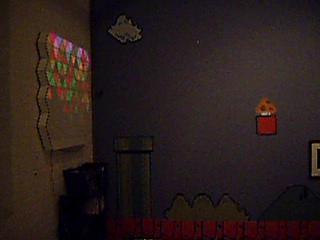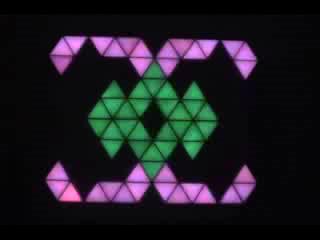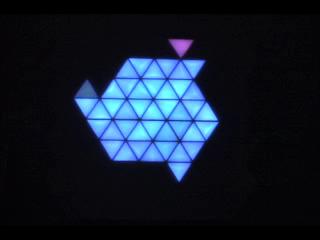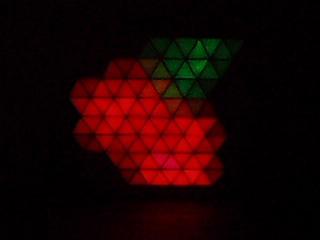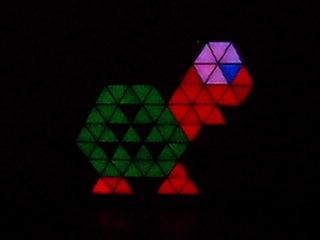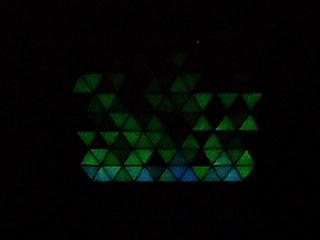Post-opening Update
The art show opening went really well. There were a ton of people there, and from what friends have told me, many, many people was awed by the wall. The visible damage along the top of the wall was out of eyesight (being ~9' high), so no problems there.
I will be talking with the landlord of the Q'arma Building tonight about possibly renting a small studio space. He has a few smaller (320 and 290 sq. ft.) studios that are relatively affordable, so I am going to be exploring this option for working on the wall. My current apartment isn't suitable at all for the work I need to do (cutting wood, etc), so this will hopefully work. The studios are in the basement and don't look pretty, but just need a work area, nothing more.
As you may have noticed, things have slowed down a bit. Relaxing at the end of a day is a welcome luxury after the last 2 months.
I have briefly started looking into the USB interface, and boy is that going to suck. I've found a book or two addressing the issues of USB interfaces to project devices (exactly what I have), so I will probably pick one or more of them up. It's a very complex communication method, especially since I have to write both sides. We'll see how that goes :|
Labels: Miscellaneous
